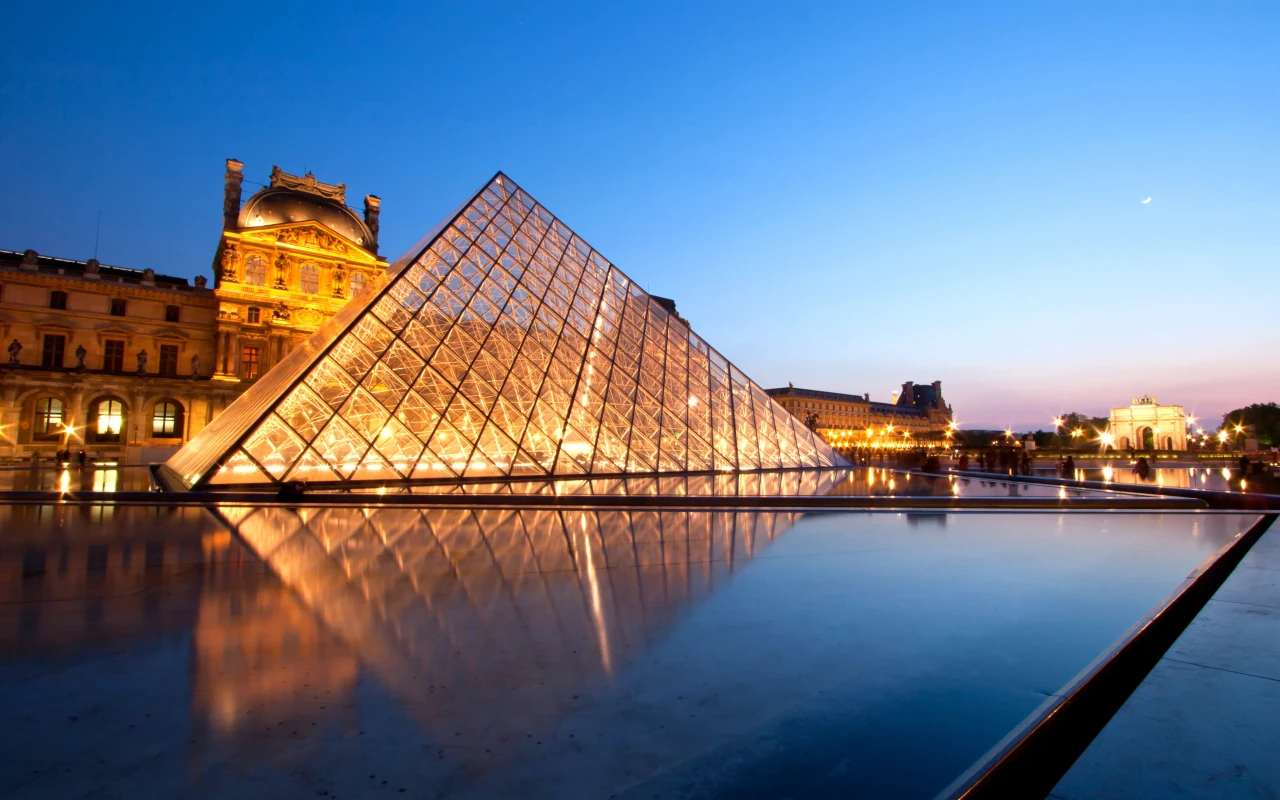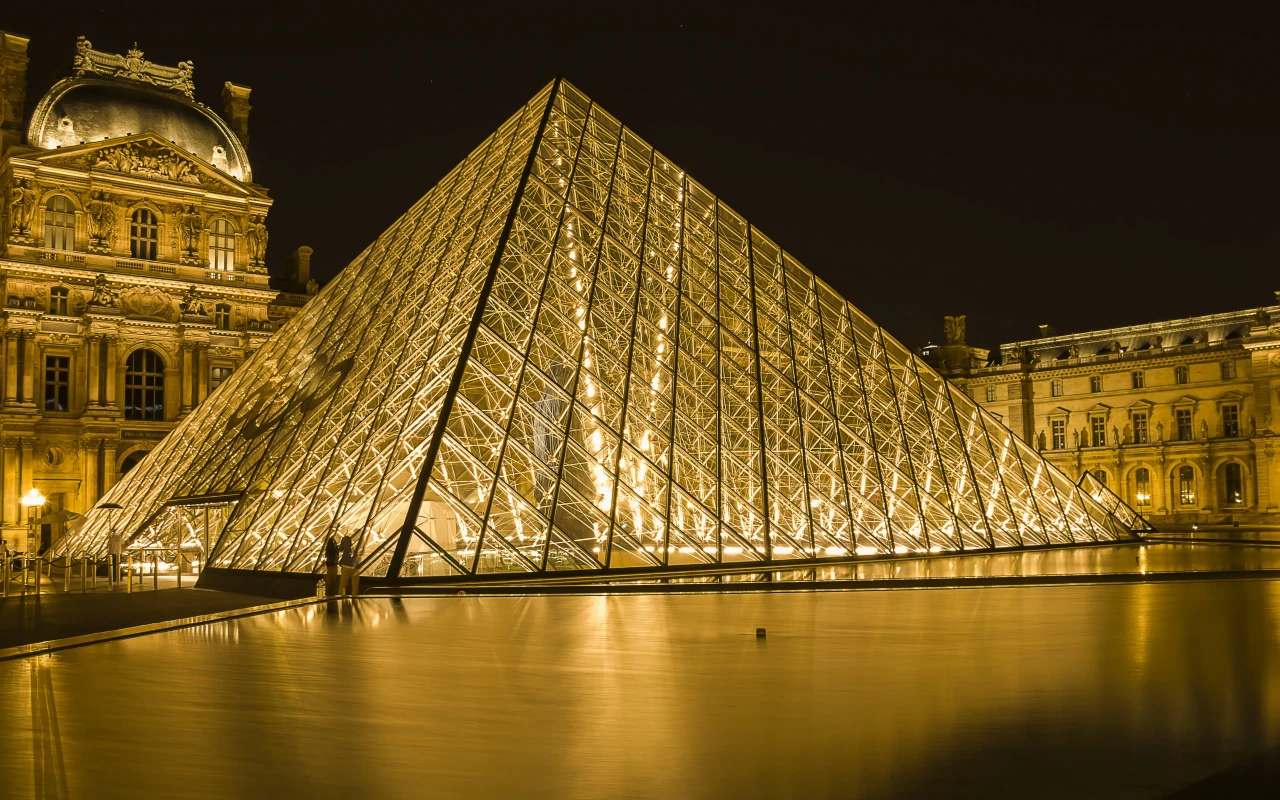Claim to Fame
The Louvre is the world’s largest art museum and home to some of humanity’s most treasured masterpieces, including the Mona Lisa and the Venus de Milo.
📌 Navigating Louvre Museum : Answers to Frequently Asked Questions
- Admission Fee: Admission fee required; free on the first Saturday of each month from 6 PM to 9:45 PM and on Bastille Day (July 14).
- How Long to Visit: Plan at least 3-4 hours for a visit, potentially a full day to explore extensively.
- Washrooms: Accessible restrooms are available throughout the museum.
- Hours of Operation: Open daily except Tuesdays, from 9 AM to 6 PM; night openings until 9:45 PM on Wednesdays and Fridays.
- Important Information: Consider downloading the Louvre's official app for a detailed map and audioguide to enhance your visit.
- Restaurant or Cafe: Multiple dining options within the museum, including cafes and a formal restaurant.
- Gift Shop: Gift shops offer a wide range of products from books to reproductions of artworks.
- Handicap Accessible: Fully accessible to visitors with disabilities, offering free wheelchairs and adapted guided tours.
- Pets: No pets allowed except for service animals.
- Guided Tours: Guided tours available in multiple languages covering various collections within the museum.
- WIFI: Free WIFI available throughout the museum.
- Picnic Area: No specific picnic areas, but the Tuileries Garden outside is perfect for picnics.
- Parking: Underground parking available at Carrousel du Louvre, accessible from Rue de Rivoli or Quai des Tuileries.
- Family Friendly: Highly family-friendly with activities and workshops for children; free entry for under 18s and under 26s (EU residents).
- Photography: Photography is allowed without flash; tripods are prohibited without prior authorization.
Photos of Louvre Museum
Once a royal palace, the Louvre Museum in Paris is now a global icon of art and culture. With over 35,000 works on display, it offers an extraordinary journey through history, spanning ancient civilizations to 19th-century European masterpieces. The glass pyramid entrance, designed by I.M. Pei, has become a modern symbol of the museum’s fusion of heritage and innovation.
What to Expect
The Louvre is divided into eight departments including Egyptian Antiquities, Islamic Art, Greek and Roman Antiquities, Decorative Arts, Sculptures, and Paintings. Highlights include Leonardo da Vinci’s Mona Lisa, Delacroix’s Liberty Leading the People, and The Winged Victory of Samothrace.
Plan to spend at least half a day here, though art lovers could easily spend multiple days exploring the museum’s 650,000+ square feet of gallery space. Free maps and mobile apps can help you navigate the layout, and guided tours are available for deeper insight into key works.
Background and Cultural Context
Originally built as a fortress in the late 12th century, the Louvre was transformed into a royal palace and later repurposed as a public museum following the French Revolution. It opened to the public in 1793 and has since become a cultural cornerstone of France, reflecting the nation's deep commitment to the arts.
Best Time to Visit
Arrive early in the morning or on a weekday to avoid peak crowds. Evenings on Wednesdays and Fridays tend to be quieter. The first Saturday of each month (after 6 PM) offers free admission, but expect larger crowds.
How to Get There
The Louvre is located in the 1st arrondissement on the Right Bank of the Seine. Take the Metro to Palais Royal – Musée du Louvre (Line 1 or 7). From there, it’s a short walk through the Carrousel du Louvre shopping area to the main entrance beneath the glass pyramid.
Photo Opportunities
- The glass pyramid illuminated at night
- The Mona Lisa — get there early for a clear shot
- Architectural symmetry in the museum courtyards
- Views of the Seine and historic Paris from upper floors
Travel Tips
- Buy timed-entry tickets in advance to skip long lines.
- Wear comfortable shoes — you’ll be walking a lot.
- Large bags and suitcases are not permitted inside the museum.
- Consider focusing on one or two wings per visit to avoid fatigue.
FAQs
Is the Mona Lisa smaller than expected?
Yes — it measures just 30x21 inches (77x53 cm) and is displayed behind bulletproof glass with crowds gathered around.
Is the Louvre suitable for children?
Yes — the museum offers family-friendly materials and activity trails for kids.
Can I take photos?
Yes — non-flash photography is allowed in most galleries, but tripods and selfie sticks are not permitted.
Final Thoughts
A visit to the Louvre is more than a museum tour — it’s a walk through the soul of civilization. Whether you’re there to see legendary works or explore hidden gems, the Louvre promises an inspiring, unforgettable experience in the heart of Paris.


